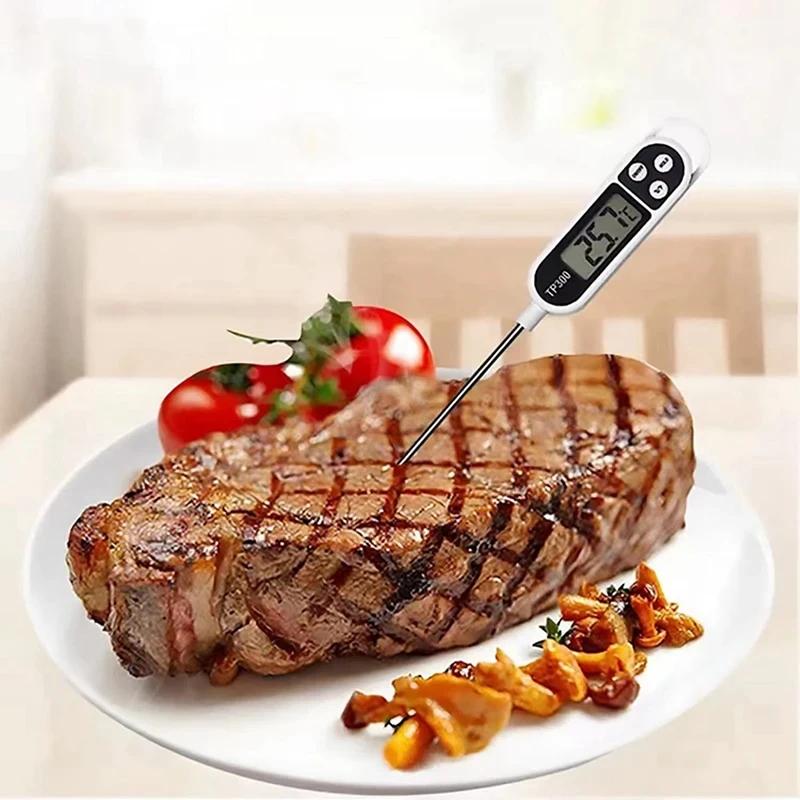Email format error
Email cannot be empty
Email already exists
6-20 characters(letters plus numbers only)
The password is inconsistent
Email format error
Email cannot be empty
Email does not exist
6-20 characters(letters plus numbers only)
The password is inconsistent


Mastering the Art of Roasting Turkey: Perfecting Temperature Control with a Meat Thermometer
Roasting the perfect turkey is a culinary art form that requires precision, patience, and a keen understanding of temperature control. Among the various tools and techniques at your disposal, a meat thermometer stands out as an indispensable ally in ensuring that your bird is cooked to perfection. In this comprehensive guide, we will delve into the intricacies of using a meat thermometer to achieve the ideal roast turkey, from selecting the right thermometer to mastering the art of temperature monitoring throughout the cooking process.
Selecting the Right Meat Thermometer: A Crucial Decision
Before diving into the intricacies of temperature control, it's essential to start with the right tool for the job: a reliable meat thermometer. With a myriad of options available on the market, ranging from traditional analog thermometers to high-tech digital probes, choosing the perfect thermometer can seem like a daunting task. However, by considering factors such as accuracy, ease of use, and versatility, you can narrow down your options and select a thermometer that meets your specific needs.
When selecting a meat thermometer, look for one that provides quick and accurate readings. Digital instant-read thermometers are popular choices for their speed and precision. Alternatively, leave-in probe thermometers are ideal for monitoring the temperature of the turkey throughout the cooking process without the need to open the oven frequently.
Understanding Temperature Zones: The Key to Consistent Results
Achieving the perfect roast turkey requires a nuanced understanding of temperature zones within the bird. By strategically placing your meat thermometer in different areas, you can ensure that each part reaches the desired level of doneness without overcooking or undercooking. Let's explore the three primary temperature zones and how to navigate them effectively:
1. Breast Temperature: The Heart of the Matter
The breast meat is the focal point of any roast turkey, prized for its tender texture and succulent flavor. To ensure that the breast is cooked to perfection, insert the meat thermometer into the thickest part of the breast, avoiding contact with the bone. The target temperature for the breast meat is **165°F (74°C)**, at which point it should be fully cooked yet still moist and juicy.
To achieve an evenly cooked breast, consider using a technique called "tenting." This involves covering the breast with aluminum foil during the initial stages of roasting to prevent it from drying out while the rest of the turkey cooks. Remove the foil during the last hour of cooking to allow the skin to brown evenly.
2. Thigh Temperature: Navigating Dark Meat Territory
While the breast often takes center stage, the thighs play a crucial role in the overall flavor and texture of the turkey. Dark meat lovers rejoice in the rich, savory goodness that the thighs provide. When measuring the temperature of the thighs, aim for a slightly higher target of ?“175°F (79°C)”. This ensures that the dark meat is fully cooked and tender, with any traces of pinkness eliminated.
To promote even cooking, position the turkey with the legs facing the back of the oven, where the heat is most concentrated. This will help the thighs cook more quickly and evenly, preventing them from becoming dry or tough.
3. Stuffed Turkey Temperature: A Delicate Balancing Act
For those who prefer a stuffed turkey, navigating temperature control becomes even more critical. The stuffing must reach a safe internal temperature of “165°F (74°C)” to eliminate any risk of foodborne illness. To achieve this, it's essential to monitor both the temperature of the stuffing and the surrounding meat, adjusting the cooking time as needed to ensure thorough cooking without drying out the bird.
To ensure that the stuffing reaches the desired temperature without overcooking the turkey, consider loosely packing the cavity with stuffing and covering it with foil during the initial stages of roasting. Remove the foil during the last hour of cooking to allow the stuffing to brown slightly.
Tips for Accurate Temperature Monitoring
While using a meat thermometer is relatively straightforward, there are a few tips and tricks that can help you achieve more accurate temperature readings and ultimately, a perfectly roasted turkey:
1. Proper Thermometer Placement: Always insert the meat thermometer into the thickest part of the meat, away from any bones or fat deposits, to ensure an accurate reading.
2. Avoiding Contact with Pan or Grate: Ensure that the thermometer probe is not touching the roasting pan or grate, as this can result in false readings.
3. Allow for Resting Time: After removing the turkey from the oven, allow it to rest for at least 20-30 minutes before carving. During this time, the internal temperature will continue to rise, reaching the perfect level of doneness.
4. Calibrate Your Thermometer: Periodically calibrate your meat thermometer to ensure accuracy. This can be done by immersing the probe in ice water (32°F/0°C) or boiling water (212°F/100°C) and adjusting the thermometer accordingly.
Conclusion: Elevate Your Roast Turkey Game with Precision Temperature Control
Mastering the art of roasting turkey is a culinary journey filled with experimentation, discovery, and, of course, delicious rewards. By harnessing the power of a meat thermometer and understanding the nuances of temperature control, you can elevate your roast turkey game to new heights. Whether you're hosting a holiday feast or simply craving a taste of tradition, let precision temperature monitoring be your guiding light on the path to poultry perfection.

